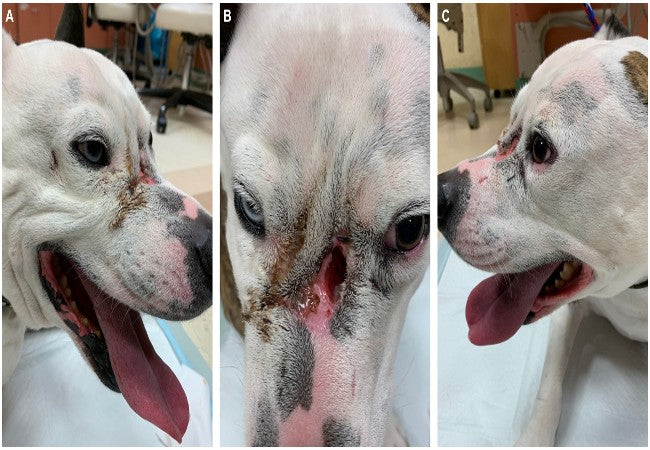Veterinary Guide to Canine Perirenal Pseudocysts 2025 🐶🩺

In this article
Veterinary Guide to Canine Perirenal Pseudocysts 2025 🩺🐶
By Dr. Duncan Houston BVSc
🧬 What Are Perirenal Pseudocysts?
Perirenal pseudocysts are fluid-filled sacs that accumulate around a dog’s kidney, between the kidney capsule and surrounding tissues. Unlike true cysts, they lack an epithelial lining. Although uncommon in dogs, they can occur secondary to trauma, chronic kidney disease, obstruction, or spontaneous formation.
👥 Who’s at Risk?
- Predominantly older dogs, sometimes middle-aged; often unilateral but can be bilateral.
- Male dogs appear overrepresented, paralleling feline data.
- Associated factors include chronic kidney disease, trauma, urinary obstruction (stones, tumors), or prior surgery.
⚠️ Clinical Signs
- Progressive abdominal enlargement or “mass” over the kidney region.
- Often non-painful on palpation; dogs may remain asymptomatic.
- Signs of kidney disease may manifest: lethargy, reduced appetite, excessive thirst or urination, weight loss, or mild azotemia.
- History may include flank trauma or urinary obstruction episodes.
🔍 Diagnostic Approach
- Physical exam: Palpation reveals a mass near the kidneys without pain in many cases.
- Bloodwork & urinalysis: Check renal values, hydration status; may see mild azotemia or other markers of kidney disease.
- Ultrasound: Identifies anechoic fluid around the kidney capsule; key diagnostic tool.
- Excretory urography or contrast CT (rare): Useful to differentiate cyst from urinoma or structural lesions.
- Fluid aspiration: Under ultrasound, aspiration helps confirm transudate/urine; high creatinine suggests urinoma.
- Feline data caution: While most evidence comes from cats, canine features tend to align.
🛠️ Treatment Options
1. Percutaneous Drainage
- Under ultrasound guidance can be pressure; fluid sent for analysis.
- Often provides temporary relief—fluid often reaccumulates if underlying cause is ongoing.
2. Sclerotherapy
- Injecting a sclerosing agent (e.g., alcohol) post-drainage may reduce recurrence.
- Limited canine data, but promising results in other species.
3. Surgical Intervention
- Fenestration or deroofing of the capsule with omentalization helps fluid resorption.
- Partial or total nephrectomy may be needed if the kidney is nonfunctional or affected by malignancy.
4. Treat the Underlying Cause
- Address CKD with diet, fluid therapy, and medications.
- Remove urinary obstructions (stones, tumors). Manage trauma sequelae.
📈 Prognosis & Follow‑up
- Depends on the underlying renal health. If CKD is mild, dogs often do well post-treatment.
- Repeat drainage may be needed if the pseudocyst recurs.
- In dogs with severe CKD, prognosis is guarded, even after cyst removal.
- Malignancy or non-functioning kidneys worsen outlook—nephrectomy may help, but carries risk.
🏡 Home Care & Prevention
- Monitor for swelling near the kidneys, changes in appetite, drinking, or urination.
- Manage CKD with low‑phosphorus, moderate‑protein renal diets.
- Avoid trauma; promptly treat urinary infections and stones.
- Support hydration via fresh water and, if CKD present, home subcutaneous fluids.
📱 Ask A Vet Telehealth Support
- 📸 Upload abdominal photos or ultrasound clips to assist remote evaluation.
- 🔔 Get reminders for drainage follow-ups and fluid therapy administration.
- 🩺 Video consults to guide home management, assess swelling, hydration, and appetite.
🎓 Case Spotlight: “Rex” the Terrier
Rex, a 10‑year‑old terrier, was noted to have abdominal swelling. Ultrasound revealed a unilateral perirenal pseudocyst. Under ultrasound guidance, 700 mL of clear fluid was drained; fluid creatinine suggested urinoma. He later underwent surgical deroofing with omentalization. After surgery, renal values stabilized, and Rex remained symptom-free at 6 months. Ask A Vet supported weekly telehealth check-ins, medication reminders, and CKD diet delivery. 🐕👍
🔚 Key Takeaways
- Perirenal pseudocysts are uncommon fluid accumulations around the kidney capsule, often unilateral.
- They often present as non-painful abdominal swelling; underlying CKD or urinary issues may coexist.
- Diagnosis relies on ultrasound and fluid analysis; sometimes contrast imaging is useful.
- Treatment options include drainage, sclerotherapy, surgical deroofing, or nephrectomy.
- Prognosis depends largely on underlying kidney health and management of the root cause.
- Ask A Vet telehealth supports remote assessment, drainage management, dietary guidance, and care coordination 📲🐾
Dr Duncan Houston BVSc, founder of Ask A Vet. Download the Ask A Vet app to help your dog with perirenal pseudocysts—from remote monitoring and drainage scheduling to surgical planning, CKD diet delivery, and telehealth check-ins 🐶📲






